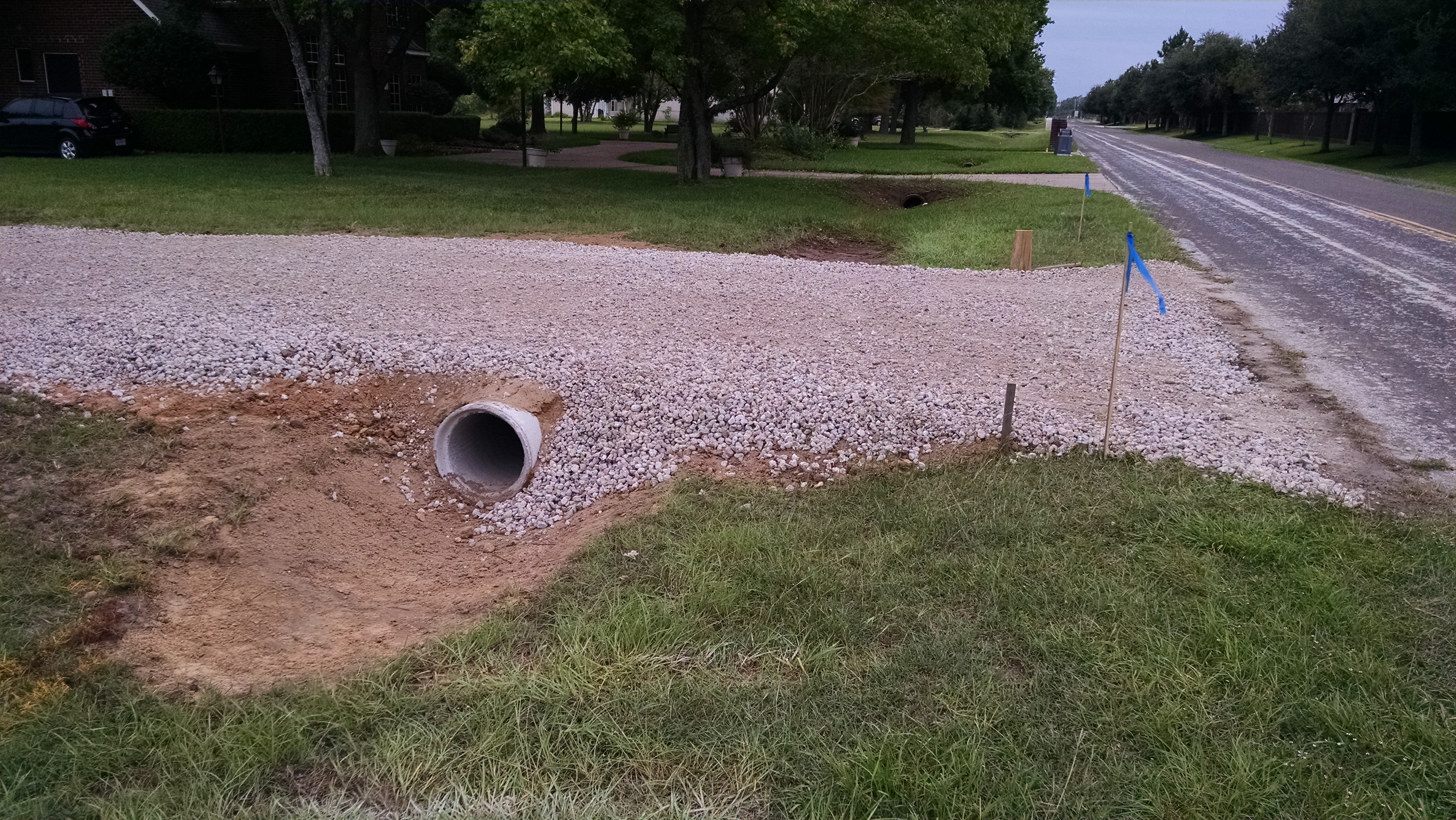Culvert Installation Made Easy: Step-by-Step Overview for Success
From choosing the suitable culvert dimension to integrating proper drainage steps, each action in the setup process plays a crucial function in the performance and longevity of the culvert system. Keep tuned to reveal the crucial actions and factors to consider that can make culvert setup a smooth and successful undertaking.
Selecting the Right Culvert Size
Picking the ideal culvert size is crucial for making certain effective water circulation and architectural integrity in culvert installment projects - Pad Construction. The size of the culvert straight impacts the flow capability of water via the structure. A culvert that is also tiny can result in flooding and overflow, while one that is as well huge might lead to decreased water rate, potentially creating debris buildup and obstructions
To determine the ideal culvert size, aspects such as the watershed area, peak flow prices, and hydraulic performance demand to be carefully thought about. Estimations based upon these parameters help in picking a size that can properly deal with the predicted water volume while minimizing the risk of obstructions and structural failure.
It is important to get in touch with engineering guidelines and standards to guarantee that the chosen culvert dimension fulfills the task requirements and local regulations (Pad Construction). By choosing the appropriate culvert size, job managers can enhance water flow, prevent possible concerns, and boost the total efficiency and long life of the culvert installment
Preparing the Installation Site
Efficient culvert installment requires precise prep work of the installment website to guarantee optimum structural assistance and capability. Before beginning the setup procedure, it is vital to clear the website of any debris, plants, or obstructions that might impede the culvert's placement.
Additionally, it is very important to take into consideration elements such as dirt structure, groundwater degrees, and ecological impacts when preparing the installation website. Performing a thorough site analysis can help determine any potential challenges or dangers that might impact the culvert's efficiency. By making the effort to prepare the installation site correctly, you can help ensure a successful culvert installment that satisfies structural demands and makes sure lasting performance.
Placing the Culvert Appropriately

The quality at which the culvert is placed is crucial for preserving an appropriate incline for water circulation. In addition, the culvert needs to be oriented correctly to make sure that the inlet and outlet are in the proper places. Pad Construction.
Backfilling and Compacting the Soil
Appropriate backfilling and compaction of the dirt around the culvert is necessary to make certain stability and avoid prospective problems in the future. As soon as the culvert is properly placed, the next essential step is to backfill the area around it with suitable material. The backfill material must be without rocks, particles, and raw material to prevent damage to the culvert. It is recommended to use granular product such as sand or crushed rock for backfilling, as it supplies great drain and compaction homes.
Compaction why not try these out helps in find this lowering the chances of negotiation and guarantees consistent support around the culvert. It is essential to small the soil evenly on all sides of the culvert to keep its structural honesty.
Proper backfilling and compaction not just offer security to the culvert but also aid in stopping dirt erosion and keeping the durability of the culvert system.
Making Certain Appropriate Drain Assimilation
Integrating efficient drainage solutions plays an important function in the general capability and longevity of culvert setups. Correct drain assimilation is important for managing water flow, stopping disintegration, and ensuring the structural honesty of the culvert system. To attain this, it is vital to make an extensive drain strategy that takes into consideration elements such as the volume of water anticipated, the topography of the location, and the sort of dirt existing.

Furthermore, incorporating features like disintegration control measures, such as riprap or greenery, can better enhance the effectiveness of the water drainage system. By very carefully preparing and implementing these drainage remedies, culvert setups can function effectively and withstand the examination of time.
Final Thought
Finally, correct culvert setup is critical for keeping efficient drain systems. By selecting the ideal culvert size, preparing the installment site, positioning the culvert properly, backfilling and compacting the dirt, and making certain correct drain assimilation, success can be accomplished. Adhering to these steps will certainly help make certain the long life and efficiency of the culvert, ultimately adding to the overall success of the drain system.